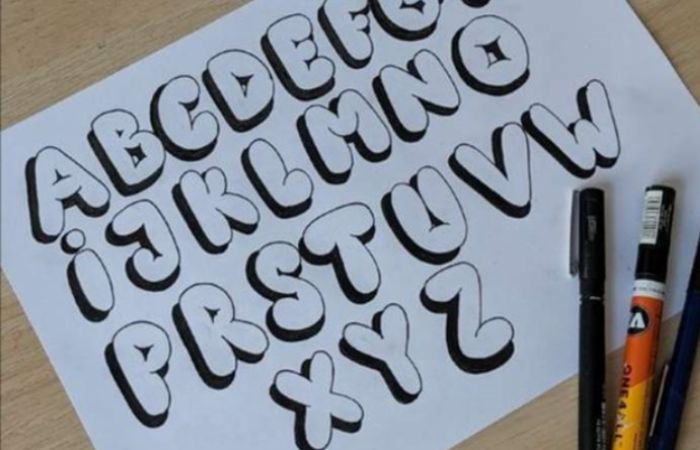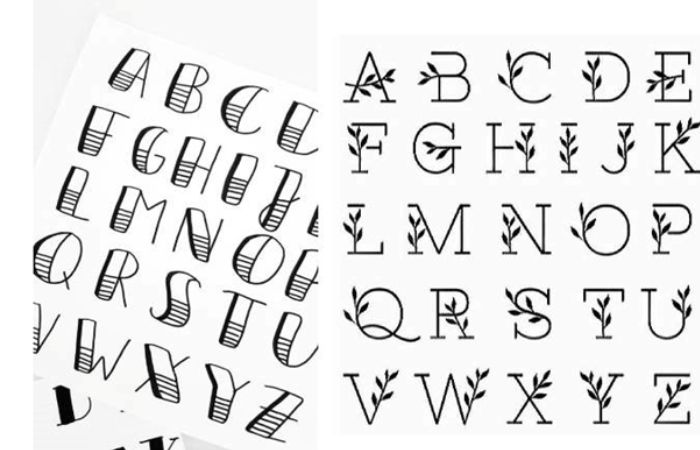stylish:19qovstzyio= a to z alphabet
Stylish:19qovstzyio= A to Z alphabet: A Complete Guide for Alphabet Design
Introduction
Ever thought of making the alphabet more interesting? This is the ultimate guide where you can learn how to turn a kindergarten letter into an eye-catching design. Today, I am going to take you through some of the ways you can style alphabets, from classic calligraphy to modern digital fonts.
Why Style Matters in Alphabet Design
Yet, in the context of alphabet design, style is a shapeshifter that breathes life into every letterform, urging them to say more than just their words. Every font style gives off a different feeling and aesthetic; for instance, serifs look more elegant, while sans-serifs tend towards minimalism. The styling choice can change the implication, creating vibes of tone and personality with every curve or line. From branding to signage and digital media, the style of an alphabet provides a visual form that makes language stand out, makes it easier to read, or gives it personality. So, style plays a large role in how written language interfaces with and hooks its readers.
Typography plays a crucial role in:
- Brand identity
- Visual communication
- User experience
- Marketing materials
- Personal expression
Basic Elements of Stylish Alphabets
The fundamental elements of fancy alphabets combine appearance and functionality, providing each alphabet with a unique design. A few of the key components are line thickness, which determines the heaviness and importance of a typeface, and spacing so that characters remain legible without crashing into each other. The shape provides consistency between related characters, while the serif fiends give each style a little flourish and individuality. This includes angles and curves within letters and sharp corners for a modern, bold feel, while round forms tend to feel soft or friendly. Cumulatively, these factors contribute to an alphabet that is both legible and visually compelling.
- Line Weight
- Bold strokes
- Light strokes
- Varied thickness
- Decorative Elements
- Serifs
- Swashes
- Flourishes
- Ligatures
- Spacing and Layout
- Kerning
- Leading
- Letter spacing
Popular Alphabet Styling Techniques

Well, the styling techniques have these simple forms jump up into decorative designs with a lot of personality and flair. Methods such as shadowing and 3D effects give the illusion of depth, making your letters vivid and dimensional. Shading and color fill make the element more colorful, while distressed or textured finishes give you that old-timey look. From stylized serifs and brushstroke effects to custom ligatures, these functional elements are given unique twists that often echo their large counterparts’ handcrafted or artistic essence. These methods let typographers shape alphabets according to the mood and attitude, thereby making typography a comprehending part of visual communication.
Calligraphy
- Traditional pen and ink
- Modern brush lettering
- Digital calligraphy
Typography
- Serif fonts
- Sans-serif designs
- Display typefaces
Hand Lettering
- Sketched letters
- Artistic interpretations
- Custom modifications
Digital Tools for Alphabet Styling
Modern digital tools have forever changed the way designers can manipulate and adorn their lettering, giving them an arsenal of options to make it as fancy or mundane as they are pleasing with a few button clicks. With programs such as Adobe Illustrator or Procreate, the users can lay textures, shadows, and small details off to each letter; Glyphs and Fontself software assist in generating new typefaces or making changes to existing ones. Photoshop gives you layer-based color, gradient, and 3D effects so that you can play around with your design ideas.
It is usual when we are creating something new or amazing for our client earlier than any project inaugurates; we generally spend a lot of time on tools like Photoshop to test how cool those would look in the inadequacy of colors, etc. Moreover, you can also create eye-popping text through readily available templates and various inbuilt written styles such as Canva. These tools help designers actualize imaginative, professional font styles because hundreds of Socicon arrays are available.
Recommended Softwares
- Adobe Illustrator
- Procreate
- Figma
- Canva
Online Resources
There are many free and premium online tutorial platforms that you can use to heighten your art on the drawing. Some of them are:
- Font libraries
- Design tutorials
- Template collections
Practical Applications
Applications in today’s world play a crucial role in transforming your art or business to a new level.
Business Use
- Logo design
- Brand materials
- Marketing campaigns
Personal Projects
- Art creation
- Journaling
- Social media content
Tips for Creating Stylish Alphabets

Stylish alphabets demand serial moments of creativity and technique balancing. First, you need to understand the purpose of your design and its audience; this will help determine just how playful, bold/ minimalistic, and elegant it needs to be. Play around with shapes, ratios, and spaces; every letter must be balanced. Gentle effects such as shadows, gradients, or textures can add some cool factor but ensure the style remains consistent. Sketch first: Scamping is a term designers use to describe their initial ideas (scamps), sometimes simple and rough sketches that will have been drawn long before any digital design work commences. More importantly, ensure you keep all style elements consistent for each letter so your alphabet looks refined and cohesive.
Start with Basics
Creating stylish alphabets is not easy without starting from the basics. Build A Strong Foundation Focus on elements like line weight, space, and the uniformity of shape. You will start with the basic structure of well-balanced simple letterforms, then, as you understand and know how to use these simple shapes, add a little twist, a slight curve, or an unusual serif. Being mindful of symmetry and consistency between each letter will ensure your alphabet is visually balanced. You want to learn those first, and with mastery of the basics, you will become more comfortable exploring sophisticated details, making your design execution look good on the final phase points.
Master fundamental shapes
- Practice consistency
- Understand proportions
Develop Your Style
- Experiment with different tools
- Mix techniques
- Find inspiration
Maintain Readability
- Balance decoration with clarity
- Consider scale
- Test in different sizes
Common Mistakes to Avoid
Draw stylish alphabets without making the mistakes resulting from inexperience with attention to detail! A common mistake is spacing too inconsistently, making the design appear lopsided. It gets too bold by overcomplicating the letters, flourishes, or details that overpower everything else about the style, making it harder to read them. A significant error is not using the proper alignment and baseline consistency, which throws off in a visual sense. If drawn with too many different styles mixed up within the same letters, or if we try to use inconsistent shapes for the alphabet, it can result in poor cohesiveness and some fluidity between each of these characters. Create balance, clarity, and uniformity so that your stylish alphabet looks creative and maintains readability.
- Overcrowding designs
- Inconsistent styling
- Poor spacing
- Sacrificing readability for style
The Future of Alphabet Design
While the future of silicon-based alphabet design has mostly been realized, there are endless places for alphabets to go in a world that combines traditional craft with high-tech machinery; imagination no longer needs to be limited by function. Thanks to digital tools and AI progress, designers can push this even further by exploring interactive work-living typography where letters adjust on the fly based on their surroundings and user input. With 3D and augmented reality, alphabet designs can be played out in more immersive ways. Future alphabets could also expose signs of sustainable design trends, such as environmentally friendly methods and minimalistic looks.
- Emerging Trends
- AI-generated fonts
- Variable typefaces
- Animated typography
- Mixed media approaches
Key Takeaways
- Balance style with functionality
- Practice consistently
- Stay inspired by current trends
- Keep learning and experimenting
Conclusion
Creating stylish alphabets is both an art and a science. By understanding the fundamental principles and practicing regularly, you can develop your unique style while maintaining readability and visual appeal. As technology and creativity spiral further, alphabet design will evolve as a living art form to suit modern needs & trends.